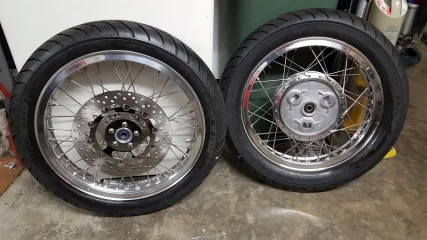lcrken
VIP MEMBER
- Joined
- Mar 15, 2009
- Messages
- 5,064
acotrel said:So you deny that the weight of the wheels can affect the way a bike handles. It probably doesn't matter much on a road bike because you are rarely in the situation where you are fighting to stay alive. When I am in an extreme situation, I always like to know what the bike will do. Any other time, it doesn't matter a stuff what the wheels weigh.
Well, first of all, I never said that. Just the opposite, in fact. Of course the weight of the wheels has an effect on handling. Why else do you think I started this thread? Less unsprung weight means better handling.
The point I keep trying to make is that unless you're a complete doofus, you don't just make a change like fitting lighter (or heavier) wheels and immediately run around the track (or the local neighborhood) at 100% just to see if you can fall down. To repeat myself from my previous post
" Yes, changing the ride heights, or damping, or wheel weights, or whatever, has an effect, but it's not something that's going to throw you down the road unexpectedly unless you ride like a complete idiot. You make some changes, see what effect they have, and ride accordingly."
And if you don't like the effect, you change back.
I'm with cjandme on this one. This thread is about comparing wheel weights, so I'll stick to that from now on. What makes a bike handle well is a fascinating topic, but probably deserves threads of it's own, probably many of them.
Ken

